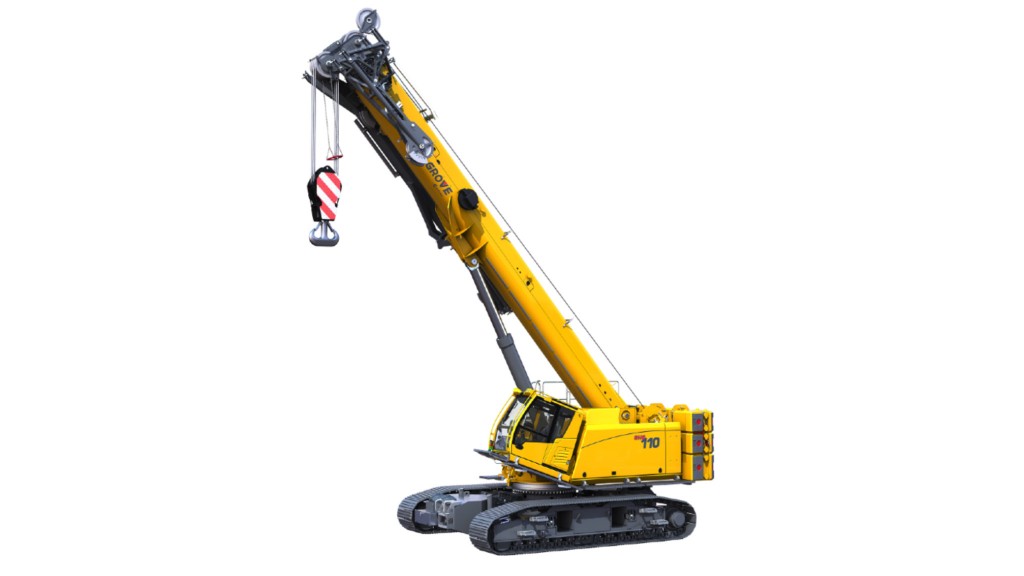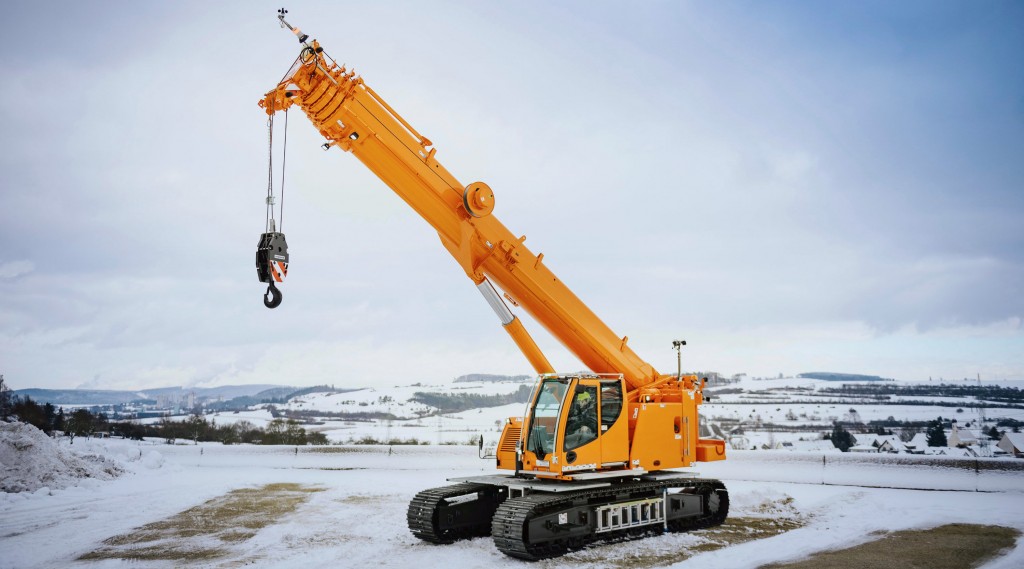
With the launch of the Grove GHC110, Manitowoc has added a new machine to the top end of its growing telescoping crawler crane range.
Featuring a 110 USt capacity, the crane is designed for a range of tasks, including alternative energy applications, road and bridge construction, and utility and barge work. The GHC110's versatility is enhanced with the optional personnel basket attachment with radio remote control.
Now available in the Americas, the Grove GHC110 will make its in-person debut at The Utility Expo in Louisville, Kentucky, on September 28, 2021.
Its five-section main boom extends from 40.4 ft - 153.4 ft, producing an impressive maximum tip height of 162 ft, or 212 ft when a standard 49.2 ft bifold offsettable swingaway boom extension is added. The main boom sections are quickly and efficiently moved into the required positions using two horizontally mounted pins and a single telescopic cylinder.
The GHC110 offers 100 percent pick-and-carry capability across its standard 0.6, 1.5 and 4 degree load charts, providing enhanced lifting performance and flexibility on the job. Although the actual allowable grade for travel with no load is 36 percent, the Grove's gradeability makes travel possible at a theoretical 57 percent.
The GHC110 is powered by a Cummins QSB6.7 Tier 4 Final engine rated at 249 hp/186 kW. A single variable displacement load sensing piston pump distributes power for all main functions, with a maximum operating pressure of 330 bar (4,786 psi). A three-section gear pump drives the water and oil coolers and pilot control.
The new machine's innovative undercarriage offers several advantages in terms of reducing the need for site prep. The wide tracks (36-inch triple bar grouser shoes are standard) create a large ground contact area, resulting in a 15.5 psi ground bearing pressure when no load is carried. This wide stance also produces enhanced stability, with the hydraulically extendable and retractable cross members offering a choice of three potential track spans (gauges) in either symmetrical or asymmetrical track positions.
The engine's noise emissions have been reduced through the addition of extra sound insulation to the engine bay. An in-cab camera enables operators to easily monitor movement of the main and auxiliary hoists. These hoists are situated side by side at the rear, reducing tailswing and providing a maximum line pull of 19,404 lbs.
An additional three exterior cameras provide increased visibility of areas where the operator's view would otherwise be restricted. There's also up to 20 degrees of cab tilt to improve operator comfort and vision for long boom and extension work.




